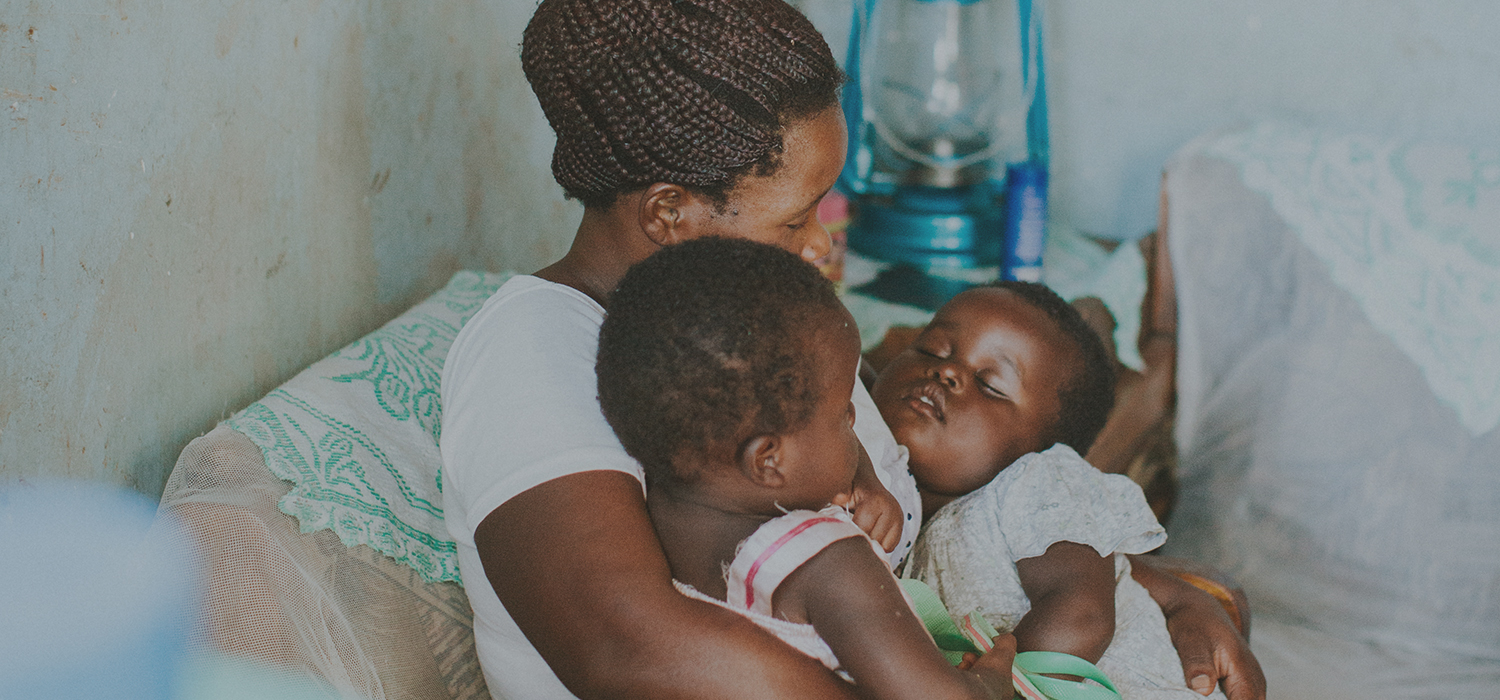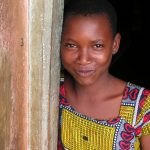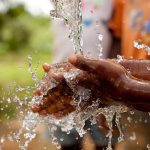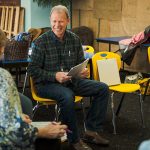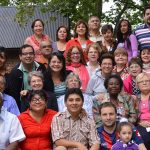November 26, 2018 7 min to read
Conflicting Information Leads to Change
Category : Interview, Testimony
During the International Wholistic Mission’s Conference in Phoenix, AZ, in 2017, Dr. Bibiana Mac Leod, MAI’s South American and Caribbean Regional Coordinator, hosted a discussion on a recent evaluation of the 1000-Day Program.
Did you know choices parents make for the first 1000 days of their child’s life can significantly impact the brain capacity and intellectual ability of that child…
for life?
This has implications for the education level a child can achieve. It has economic implications for the future of a whole generation of children, which can impact the future of a whole nation! No wonder the World Health Organization (WHO) has targeted the first 1000 days of a child’s life as a crucial window for seizing an opportunity that won’t come again.
In its 1000-Day Program, WHO focuses on nutritional needs during the period from conception to age two. Good nutrition during pregnancy and those first two years makes the permanent difference between full-capacity brain development and a lack of adequate brain development caused by malnutrition.
At the conference, Dr. Bibiana Mac Leod elaborated: When this information was shared in our communities that use Community Health Evangelism (CHE), people began to understand how nutrition is the key component during these first years of life. However, there are five areas we emphasize: the first four are emotional, spiritual, physical, and environmental. Such foundational knowledge was the basis for starting a model inside our CHE programs, giving instructions to pregnant women about their child’s needs and how to meet them. The fifth important area is that of the pregnant mother. We help her look at her prayer life; will it be dedicated to the child God has given her? We teach her songs and verses she can repeat to her baby. We stress the need for a clean home, good drinking water, the lack of domestic violence, etc.
Children in Haiti have a rare chance of surviving their first birthday. Their nutrition is not considered. Based on their parent’s spiritual beliefs, some think children under one year old do not have a spirit. “Li poko gen lespwi,” they answer (“It’s not yet alive.”), when questioned at the clinic why they have not given their child a name. So, during this significant part of the life of the child, good nutrition is almost non-existent.
Our Starting Point of Awareness
Bibiana went on to explain how this program was started in Haiti: In September 2016 Dr. Andrea Oswald and I surveyed five Haitian communities. In March 2017 we did another four communities, surveying a total of 933 children from ages zero to five years old. We used three standards:
- The height compared to a child’s age
- The weight compared to a child’s age
- The weight compared to a child’s height
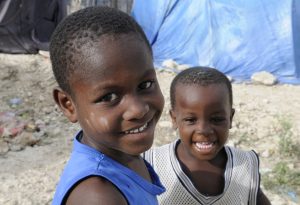 There was an evaluation done in 2013 in a different area of Haiti with 558 children; it was similar to the baseline study we did for the 1000-Day Program. However, I was very disappointed with the findings. I’d been working 20 years in this area. How in the world could the statistics reveal such little progress in the children’s health? We found 62 percent of children aged 24-to-35 months to be stunted in their growth. That was shocking.
There was an evaluation done in 2013 in a different area of Haiti with 558 children; it was similar to the baseline study we did for the 1000-Day Program. However, I was very disappointed with the findings. I’d been working 20 years in this area. How in the world could the statistics reveal such little progress in the children’s health? We found 62 percent of children aged 24-to-35 months to be stunted in their growth. That was shocking.
How could I explain what I was finding? I’m sharing with you my struggles, my challenges. How could I use these disappointing findings as my baseline? I’d been practicing CHE for so long in this community. Why were the results not better?
In the 1000-day study we are doing a fuller statistical analysis of what is important, because if you examine only one parameter, you don’t have the full picture.
Q: How did you start this program?
BM: The CHE Trainers try to discover the most basic issues at the community level that affect nutrition during these 1000 days of life. A simple lack of knowledge can be overcome with discovery of facts, like “My baby weighs much less than she should. What can I do?” Often cultural biases must be addressed with the whole family. “If Mom is pregnant she gets to eat first, not last.” Lessons often focus on what kinds of food give good nutrition and what kinds do not.
In this study we found a village where 18% of the children were anemic; another child was found very emaciated. One mom was sent to the hospital, and her child was admitted for three weeks. That mom has become a champion for the 1000-Day Program. She’s become one of the leaders and says,
“You saved my child.”
The Birth Attendants continue to be our target to facilitate healthy deliveries and pregnancies. We have a prenatal program, and the pregnant woman is visited. But she’s often visited after the fifth month. Usually, she doesn’t know she’s with child until she’s four months pregnant. We entirely miss the first trimester even though the CHEs are visiting. We all need to implant in our midwives this necessity of training the mom of all the things needed for her baby’s care while she’s pregnant.
Q: I just wonder what role economics has in this? I mean, we can talk till we’re blue in the face about what a pregnant woman needs to do, or what she should do, or could do. She can’t put more nutrition in her child’s mouth if she doesn’t have any economic means.
BM: We have been working with economic development. In these first five communities we studied in 2016, they have groups for savings and internal lending. I wouldn’t say they are rich by any means, but the economic development piece is running well. They have been planting new cash crops they were not previously exposed to, like broccoli.
Measuring Transformation
My larger challenge is, “How do we measure long-term transformation?” Early in our program in the 2000’s, these older communities were transformed. We measured the first five years of growth, and we were all very happy with the results. Yet when we left the community and moved on to another one, did they continue to teach those lessons on nutrition? What happened to the generations that were born after we left? Did their parents not teach them about nutrition?
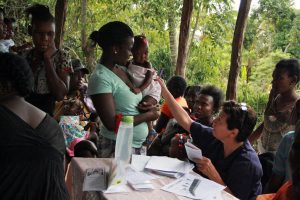
I think I’m discovering the missing piece here that is quite big in terms of the history. We should measure and evaluate more. If we don’t seriously start to measure, to make decisions for the long-term—we will all be very happy with what we measure after two years’ time and think we can prove to the world that our methods work. What if it doesn’t? What is the permanent transformation we are talking about?
We are currently following the momentum of the 1000-Day Program; everybody’s excited, and they are learning how to measure children. At the mother’s club, the mothers come with the children, their height is measured, the trainers give a lesson, and the mothers discuss the lesson—that is all happening. The CHEs work in the same nine communities, and after three years we will see the results. We’ll translate the data for it to be understood at the community level, because they are the ones that need to own the study.
Q: I really appreciate your transparency about your program, and the honesty with which we question some things that we have kind of taken for granted. We really do need to take a closer look at how we’re having longer-term impact. How does CHE translate into the longer-term?
BM: That’s a challenge. It’s great to publish a paper when you have data. I can have wonderful data, both quantitative and qualitative. I can draw conclusions, but my challenge is what do I do next? How do I improve my project with this data? Coming from a practitioner’s perspective, you want to improve the health status of the people that are in the community.
Q: So, what would you suggest as the next step?
BM: As far as what you do with the data, you give it back to the community. It belongs to the them, and they’re the ones who are responsible for their children. I am not the top-down type of person who will decide which practices we will use in the community because of what we found in the data. Rather, how do we go back and help them make decisions? Ask them why the changes are not happening. This is what we do in CHE. We can come with suggestions and ideas, but if it is not theirs, they will not own it.
If they do own it, the investment in their children and their future functioning is tremendous!
Read next article: Interview with the Women’s Cycle of Life Founder, Charleen McWilliam Hearl

